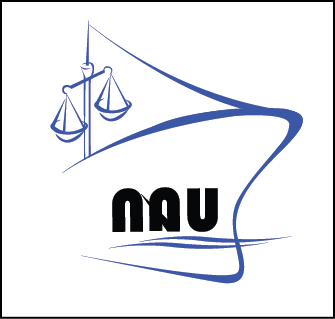The NCovid19 pandemic forced all of us to change the way we both worked and communicated. While the world is now back to normalcy, some of the changes effected during the lockdown in the way work is performed together with customer engagements is here to stay. We have had the opportunity to attend many webinars conducted by various institutions and law firms, some of which are freely available in YouTube. One of the webinars which we had viewed was of Birketts LLP (they conducted a series of Webinars on both Time and Voyage Charters). In one of those webinars, there was a reference to Art IX of the Hague Rules. Given that this is something which does crop up time and again in both Charterparties (“C/P’s”), our below article considers this issue.
- Use of the Hague/Hague Visby Rules
- C/P’s:
- Given that parties are considered generally of equal bargaining power, English Law allows freedom of contract such that parties could negotiate any terms to govern their responsibilities. Absent specific contractual provisions in C/P’s, responsibilities would be on the basis of common law and which permit limited exceptions to Owners/Carriers to exclude liability for Acts of God, Sovereign’s enemies, Inherent vice, and Fault of consignor.
- The Hague/Hague Visby rules provide additional exceptions including limitation of liability and time bars to the Owners/Carrier. Additionally, the standard of Seaworthiness is tempered in that under common law, there is an absolute obligationi to make the vessel seaworthy at the beginning of the voyage whereas under the Hague/Hague Visby Rules, this is reduced to exercise due diligence at the beginning of the voyage to make the vessel seaworthy. Hence, it is beneficial to the Owners/Carriers to incorporate the Hague/Hague Visby Rules in their C/P’s.
- Accordingly, C/P’s generally provide for the incorporation of the Hague/Hague Visby Rulesii by way of a Clause Paramountiii . This may be varied by way of a Rider Clause, and which may provide for Art I to VIII of the Hague Rules to only apply.
- Bills of Lading: Given the disparity in bargaining powers between the Owner/Carrier and cargo interests, the Hague/Hague Visby Rulesiv are generally applicable either by force of law or by incorporation of a clause paramount in the Bill of Lading terms and conditions.
- Often C/P’s termsv/contract of carriage provide for the application of only Art 1 to VIII of the Hague Rules to applyvi. The question is whether provision of such words would result in the inapplicability of Art IX of the Hague Rules.
- C/P’s:
- What is the role of Art IX of the Hague Rules?
- Art IX of the Hague Rules provides that the monetary units will be basis the Gold Value unless this has been varied by the contracting states and who have legislated a specific currency equivalentvii. This is particularly important given that Owners/Carriers are entitled, under Art IV (5) of the Hague Rules, to limit liability to a sum of 100 pounds sterling per package or unit for any cargo loss or damage. On the basis of the provisions of Art IX, the 100 Pounds sterling value is to be by reference to the quantity of gold equivalent of 100 pounds sterling in 1924viii.This would equate to a substantial sum and which would mean that Owners/Carriers limitation provisions as provided in the Hague Rules may not be of any assistance.
- We had earlier commented in one our earlier articles, Is Limitation under the Hague Rules …..Given the dicta of the English Court of Appeal in The Aqasiaix, the Hague Rules do not apply to Bulk cargo (unless the words of incorporation of the Rules have been amended to include specific measurement or freight units). This being the case, the limitation provisions of the Hague Rules only apply if the cargo is in package or unit form.
- Art III (8) of the Hague Rules: This clause, often called as the Policeman of the Rulesx, provides that if there are any provision in the contract which reduces the liability below what is available under the Rules, then that provision will be null and void and of no effect. With respect to contractual incorporation of the Hague Rules Art I to VIII only, we submit that unless Art III (8) is also excluded, the provisions of Art IX should automatically apply.
- Validity of incorporation
- C/P’s: As mentioned in 2a above, parties could whilst incorporating the Hague Rules through the Clause Paramount, agree, to say, remove the application of Art IX of the Hague Rules. As mentioned in 3 above, there is a fair argument that due to the provisions of Art III(8), provisions of Art IX cannot be excluded. An alternate view is that by expressly excluding the application of Art IX, the provisions of Art III(8) would, in so far as it relates to Art IX, by implication, be also excluded given that the basis of incorporation is not compulsory but by incorporatioin.
- Bills of Lading: Given that parties are of unequal bargaining power, we believe that Courts would try to ensure that the cargo interests and intermediate carriers are no worse off than if they had contracted on the basis of a negotiable documentxi (in which case, there may be compulsory application of the Hague or the Hague Visby Rules by force of law and which would then prevent any contractual reduction of liability).
- Insurance provisions:
- C/P’s: Invariably, Owners P&I Rules provide for their member/Insured to contract on no less favorable terms than the Hague or Hague Visby Rulesxii unless this are prevented statutorily (say by the application of the Hamburg Rules because of the domestic legislation in force). With respect to Charterers P&I Rules/Cover, similar provisions apply for the Charterers to contract with cargo interests/underlying parties on terms no less favorable than the Hague or the Hague Visby Rulesxiii. Additionally, the Charterers cover require that the Charterers contract with Owners based on approved C/P’sxiv together with rider clauses. This being the case, if there are any provision in the C/P which provides for the exclusion of Art IX of the Hague Rules, this may prejudice the cover available. This being the case, prior to agreeing any additional C/P clauses, Charterers must ensure that they do not breach the terms of their insurance cover. Alternatively, Charterers may inform their liability insurers of the inconsistent provisions and seek express cover from their risk carriers (which may result in additional premium spends).
- NVOCC operators:
- If the NVOCC contract on the basis of “use basis”, we submit that on the basis of the recent English Court of Appeal judgement, AP Moller Maersk A/S trading as Maersk Line v Kyokuyo, they would be entitled to the application of the compulsorily applicable cargo conventions. Given that NVOCC’s similarly contract with cargo interests by incorporating similar provisions, say the Hague/Hague Visby Rules, any liability arising to them (NVOCC’s) could also be passed up the chain.
- Slot/Space C/P: Similar risks as detailed in 5a above exist for NVOCC’s and hence, they should ensure that the Slot/Space C/P’s do not incorporate any provisions which may prejudice their liability cover.
- Conclusion:
- Given that Owners are entitled to liability cover for cargo on the basis of the Hague/Hague Visby Rules, we submit that it would simply be best to not tinker with the liability provisions, say by only providing Art I to VIII of the Hague Rules to apply.
- If the C/P does provide for any such exclusions, Owners and underlying carriers would invariably take advantage of such provisions. Additionally, even if Owners wish to amend their position when faced with a cargo claim, they may face difficulty in convincing their Liability Insurers given that their cover is for legal liability.
- With respect to cargo interests, at least under English Law, they would not be caught under such provisions. However, to avoid any ambiguity in other jurisdictions, it would be best to always seek a negotiable document of title. Alternatively, if the use of a SeaWay bill is contemplated, then it would be best to seek express confirmation from Owners/Carriers that the terms of the SeaWay bill will be similar to a negotiable document of title, except for, say, the provision of it being a document of Title.
i. See The Amstelslot, [1963, 2 Lloyd’s Rep.223
ii. See Clause 31(a) of the NYPE 1993, Clause B – Paramount Clause of the Gentime1999
iii. See https://www.standard-club.com/knowledge-news/article-clause-paramount-3587/
iv. In some instances, the Hamburg Rules may apply and it would depend on where the cargo is being shipped to and from.
v. Which may be provided in the Main body of the C/P or incorporated by way of Rider Clauses.
vi. See Clause 5.1 of the Maersk Bills of Lading Terms and Conditions, Clause 3.2(a) of One Network Express Bills of Lading Terms and Conditions.
vii. For instance, East Malaysia has legislated RM 850 as the equivalent sum for 100 pounds sterling. See power point presentation of Dr Kasi at a talk conducted by Sabah Law Society.
viii. See the English Judgement The Rosa S [1988] 2 Lloyds Rep 574
ix. See The Aqasia [2018] EWCA Civ 276.
x. See The Institute of Chartered Shipbrokers text book on Legal Principles of Shipping Business 8.4.8.
xi. See AP Moller Maersk A/S trading as Maersk Line v Kyokuyo Line, a decision from the English Court of Appeal and which we had commented in our previous article, Back to Basics – Contract of Carriage.
xii. See Rule 34iii of the Gard Rules 2022 which deals with P&I Cover.
xiii. See Clause 2.4b of the Charterama 2022 wordings under Class A Cover & Clause 13 (9)(iv) of Part II – Limitation of Cover under the Charterers P&I 2021 wordings.
xiv. See Clause 1.9 of the Charterama 2022 wordings on Approved Charterparties in the General Terms and Exclusions, Clause 13 (25) of Part II – Limitation of Cover under the Charterers P&I 2021 wordings.


